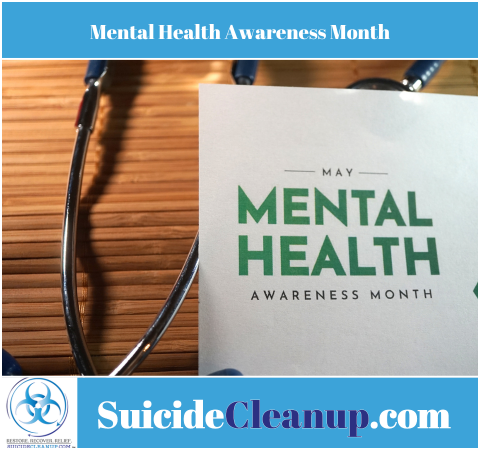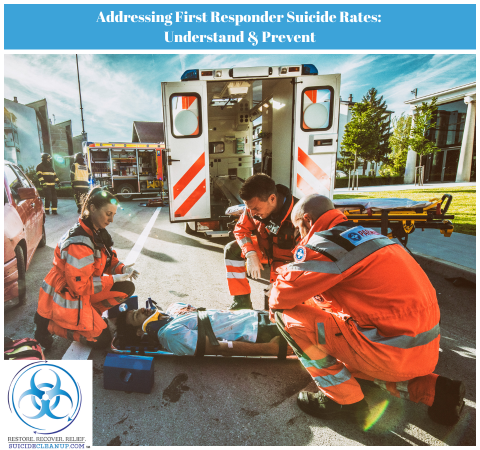
Is Suicide Contagious?
July 31, 2021
Famous Failed Suicides To Remind You To LIVE
August 31, 2021Suicide is a sensitive topic that affects many people in the United States. According to Mental Health America, over 44,000 Americans die by suicide every year.
However, there are still misconceptions about what causes someone to attempt such an act despite this statistic.
In this blog post, we will discuss five interesting facts about suicide and mental health illness that lead to it, so that you can recognize others that need support those that need it.
Myth #1: “There are Painless and Quick Ways to Die By Suicide”
It is not possible to die painlessly or peacefully. What happens after you die by suicide involves pain and suffering in all capacities. Even worse, there is no immediately guaranteed death method, so what if you survived? Remember, there’s a subconscious will to live that you don’t fully acknowledge until it’s happening. You’re likely to live after a suicide attempt and the ramifications could be lifelong pain and suffering.
In most cases, the damage is irreparable and leave a mental or physical scar that will follow you for the rest of your life. If you’re thinking about killing yourself, don’t do it. It’s not worth living with even more permanent suffering. Please call the suicide hotline at 988.
Myth #2: “All Teens Are At High Risk of Suicide”
Teenagers are the poster children to antibullying and cyberbullying related suicides, especially in reference to social media. But the data is much more disturbing than that.
LGB and transgender teens face more discrimination than their straight counterparts, making them up to four times more likely to die by suicide than heterosexual youth. The Trevor Project estimates that the failed teen transgender suicide rate implies there’s at least one American LGB teen attempts suicide every minute.
Other vulnerable populations, like veterans, are also at high risk of suicide.
For further reading, please see other common suicide statistics.
Myth #3: “Most Popular Suicide Destination Is Japan’s Suicide Forest”
The facts about suicide forest are an intriguing topic on its own considering it is one of the most popular suicide destinations in the world. However, it thought to be the Golden Gate Bridge in San Francisco that is the most popular suicide destination.
The central belief that this bridge has so many suicides is a faulty barrier and supports too high for someone to climb over from below.
Like Aokigahara, there are interesting stories of ghosts and angels that haunt the area. Fact or fiction? We’ll let you decide.
Myth #4: “Talking About Suicide is Attention Seeking”
Talking about suicide doesn’t always mean suicidal behavior. However, research shows that people are less likely to attempt if they have someone to talk to. This could contribute to how suicide can be contagious. It’s important to break the streak and not to ignore serious threats. The highest risk population are the ones that don’t have a support system, have a plan, and/or have already attempted suicide.
Remind them there is help available if needed and encourage them to seek professional help.
Myth #5: “People Who Take Their Lives Are Selfish”
Suicide is a choice that most people make not out of their own accord but because they are looking to end their difficult circumstances. Whether or not they’re selfish is a matter of opinion, not fact.
Regardless of where you stand on the topic, it’s important to be considerate. The desperation of these people can lead them to take this drastic step without even realizing help was an option in the first place. Showing any judgmental behavior to a suicidal person may lead them to even deeper feelings of vulnerability.
Reaching out for help is not easy, but a big step towards the relief they’ll ultimately have.
Myth #6: “You Must Have Mental Health Issues To Take Your Own Life”
Although mentally ill people are at higher risk of suicide, many people that are suicidal or die as a result of suicide don’t have a recognized mental illness. Further, many people with mental illness are not affected by thoughts of death or suicide.
Sometimes, mental illnesses or complicated life stress go unnoticed, especially for those that suffer in private. Tragically, these are the vulnerable populations that believe an act of suicide would make things easier to those around them. If you recognize these signs in a loved one, remind them that they are cared about greatly and would be missed if they killed themselves.
What You Can Do
With all these myths and misconceptions about suicide, it’s no wonder so many people are afraid to seek help.
The truth is that suicide comes with a lot of pain and desperation – it’s not as straightforward or fast to die with one’s own hands as many believe. We need to bring awareness to this, and events like suicide awareness month.
Mental health issues do not cause suicide; they make things worse when the person already feels like there are already issues hanging over them and life has already gone off track or they’re in pain for some other reason (like addiction).
If we want fewer suicides happening every day, then everyone needs to work together on this issue and bust these common rumors once and for all. Please share this article with a link back. Let’s spread the facts about suicidal people and thoughts, not the misinformation.




